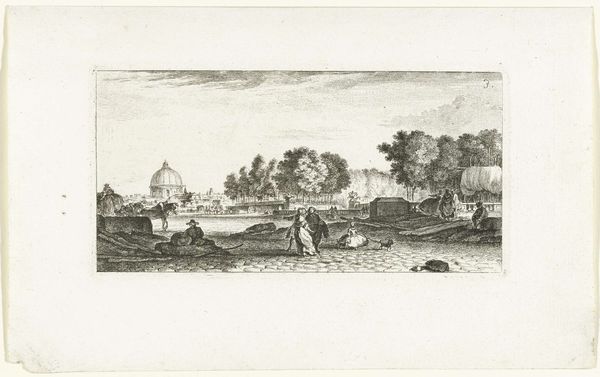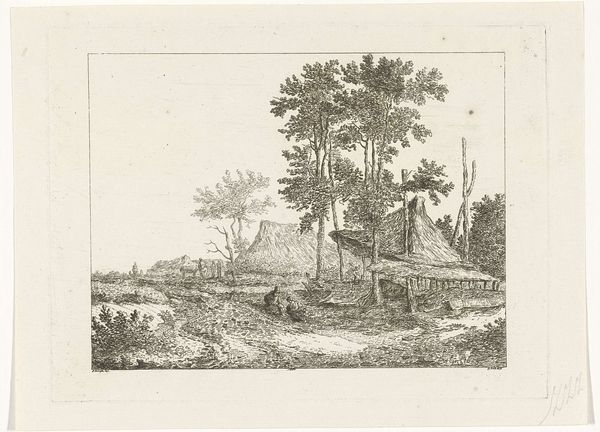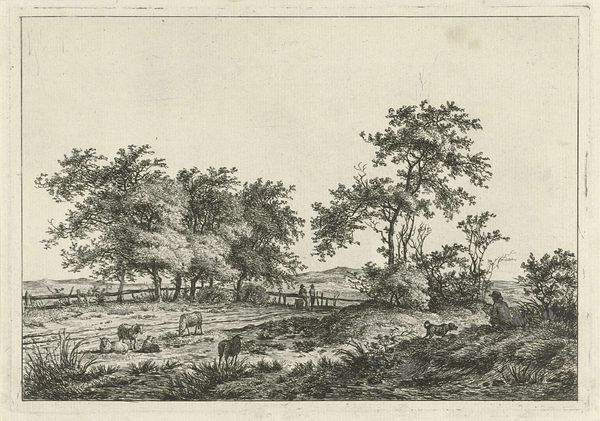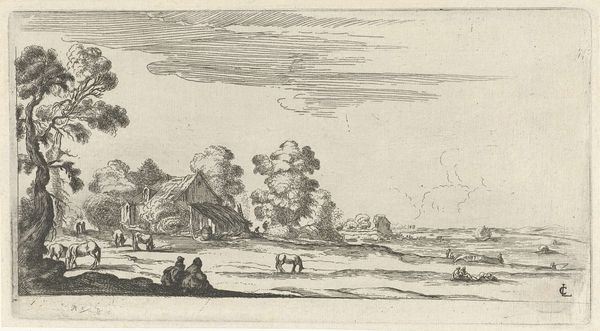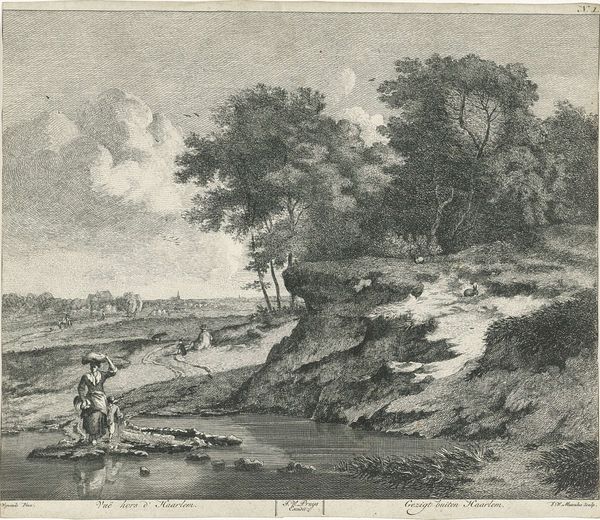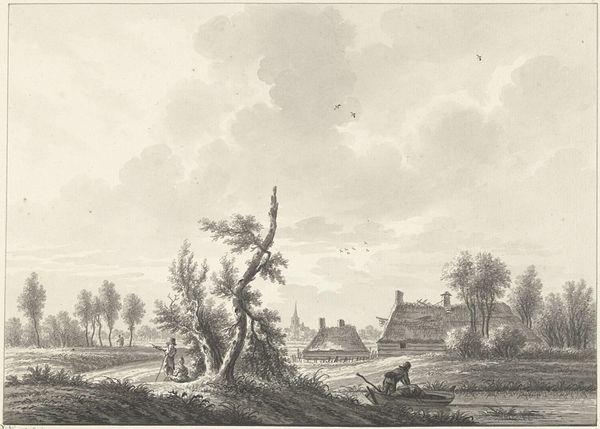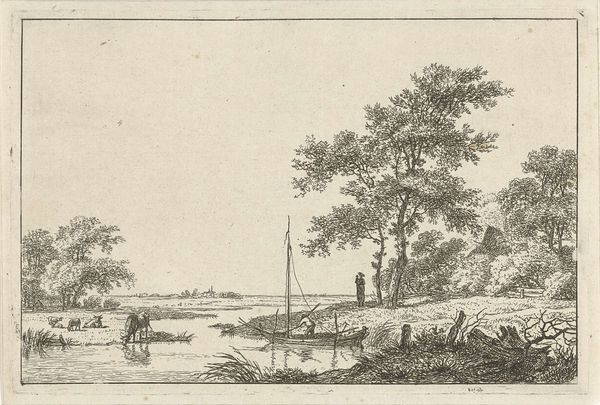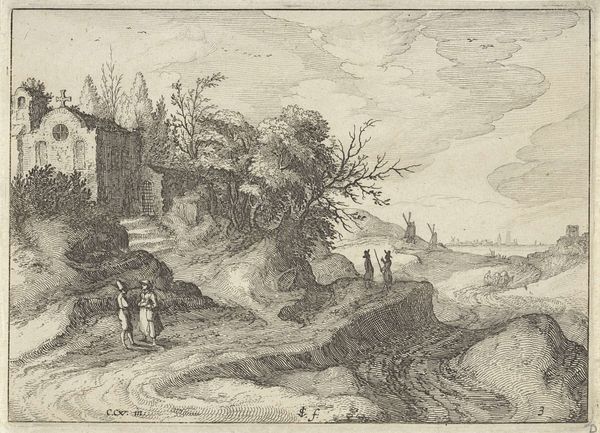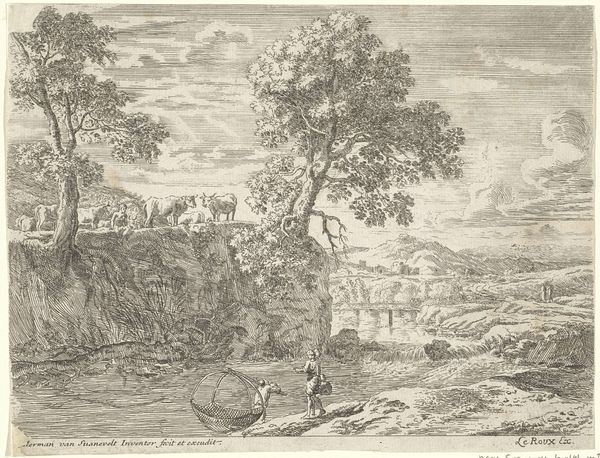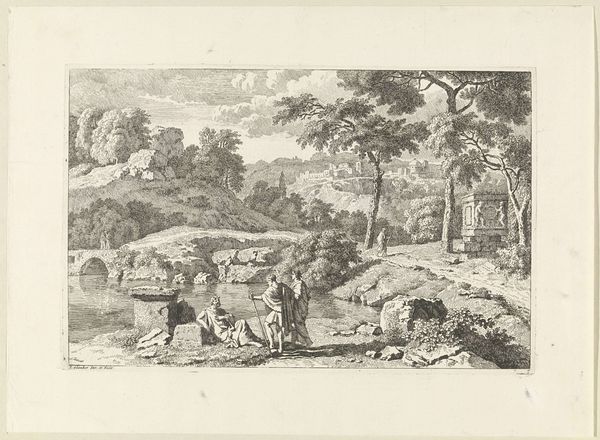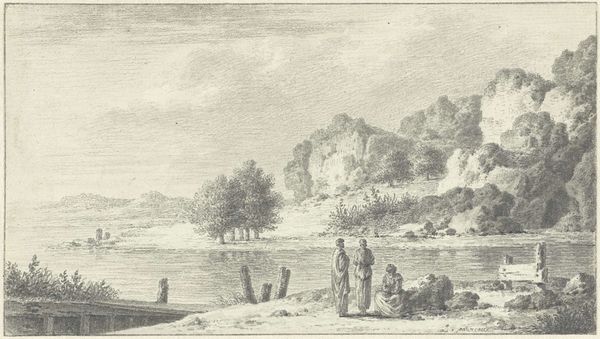
Dimensions: height 102 mm, width 134 mm
Copyright: Rijks Museum: Open Domain
Curator: We’re looking at "Landscape with Shepherd and Sheep near Two Farms," an etching by Jan Izaak van Mansvelt from 1794. The artist created this tranquil tableau using fine lines on, most likely, a copper plate. Curator: It certainly has an air of serenity about it. The monochrome palette creates a soft, dreamlike effect. It reminds me a bit of pastoral romanticism. But look closer. What might a seemingly harmless scene of rural life obscure about social inequalities in the 18th century? Curator: The eye is guided along a clear path that meanders through the landscape, leading the gaze towards the distant second farm. This careful composition creates depth using lines and diminishing scale. Notice the detailed rendering of the thatched roofs and the careful use of light and shadow? Curator: These genre scenes idealize the countryside, right? It sanitizes labor, dispossession, poverty. Were these farmlands accessible to all, or were they tied up in oppressive feudal systems? And who is conspicuously missing from this supposedly peaceful image? Where are the wealthy landowners whose exploitation sustains this 'natural' setting? Curator: Certainly, there’s a thematic tranquility, but consider the meticulous balance achieved through technical expertise in etching! Observe how the figures are positioned against these detailed buildings in the foreground to offer depth, grounding the airy vista. Curator: Yet isn’t that compositional harmony deliberately constructed to mask conflict? This "idyllic" scene downplays the often brutal realities of peasant life. Even the inclusion of the shepherd implies hierarchical structures within these communities. Curator: Despite this idyllic setting you critique, you have to recognize the quality of the printmaking here. Van Mansvelt uses hatching and cross-hatching to suggest tone and volume with striking effect. The textures! The density! This is no mere sentimental representation. Curator: Well, the sentiment is precisely the problem. It's a prettified picture contributing to narratives that overlook power structures. Curator: Perhaps, but from an aesthetic angle, the image compels, inviting contemplation about the technical achievements that brought it into being. Curator: And while one considers that achievement, one can consider who gets erased when such landscapes claim neutrality. It’s a pretty picture, indeed, obscuring many ugly truths.
Comments
No comments
Be the first to comment and join the conversation on the ultimate creative platform.
